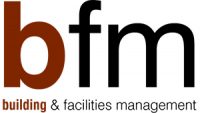How to avoid new non-energy charges

Non-energy costs are rising fast and are set to increase with the changes to excess capacity charges that could sting the unsuspecting energy buyer. Richard Smith, Director of Business Strategy for Inprova Energy, explains.
Third party, non-energy costs can now account for up to 60% of a total electricity bill. They apply to distribution and network charges for delivering electricity, together with green energy levies. These costs, which represented about 30% of an overall power bill five years ago, are predicted to push above 65% by 2020.
Beware DCP161 excess capacity penalties
From April 2018, the cost of using the electricity network could rise for larger energy consumers (using half-hourly meters) who breach their Agreed Supply Capacity (ASC), adding as much as 2% to an electricity bill.
All half-hourly electricity supplies are subject to a connection agreement with your local DNO, the costs of which are passed to the supplier via the customer’s supply contract. The ASC is essentially the maximum demand that the District Network Operator (DNO) allows customers to import from the network to their meters.
The energy regulator Ofgem is introducing a new measure called DCP161, which introduces a new penalty for organisations who exceed the limits of their power connection agreement.
At present, if the ASC is exceeded, no penalty is incurred – there’s just a standard rate charge for the excess demand. But under DCP161, the new penalty could be three times higher than the existing standard rate.
From next April, any organisation that regularly exceeds its capacity quota could see their total electricity bill rise by 1 to 2%. If their supply is on a constrained network, they could also risk losing their power connection.
Ofgem is making the change to enable the DNOs to better balance the electricity network and recover the costs they incur when capacity levels are breached.
How to avoid extra costs
DCP161 works in the same way as paying high rate charges for exceeding your mobile phone data allowance. To avoid being stung by punitive costs, organisations need to take the same care in tracking their consumption data to ensure that they don’t exceed the contractual limit.
Understanding your maximum electricity demand by measuring your consumption data is key to avoiding excess capacity penalties. Those sites that regularly exceed their quota must increase their capacity or take energy saving measures to reduce their maximum demand.
Measuring maximum demand is not straightforward. It’s not a simple case of comparing your maximum active power consumption in kW with your ASC. As the ASC incorporates active power in kW and reactive power in kvar, you will need an understanding of your use of both active and reactive power. A reputable energy consultancy with consumption data management services will be able to assist.
- Understand your existing capacity agreement
It’s important to prepare for DCP161 as soon as possible by gaining a firm understanding of what level your agreed capacity is set at, and to look at your history to see whether you have frequently hit or exceeded your ASC. This will identify whether DCP161 presents a risk. If you understand the implications of the new legislation, you can start to explore ways of avoiding and reducing the additional costs, where possible, and budget accordingly.
- Limit your power usage
Reducing your electricity usage, particularly your peak demand, could be a very effective method of countering charges. This will also reduce your overall electricity costs, so could provide a double benefit. If there’s no scope to reduce your overall demand, it might be possible to change your patterns of energy consumption to avoid hitting your capacity limit.
- Don’t set your ASC too high
It may be tempting to increase your ASC to avoid the risk of incurring penalties, but you will have to pay for any unused capacity, which could work out more expensive. Consider the future growth or possible contraction plans for your organisation and how this may impact on your capacity requirements. It is possible to apply to the DNO at any time to raise or reduce your ASC, although there may be limitations under the terms of your local DNO.
- Beware new meters
More organisations are making the move from non-half hourly to half-hourly meters, which has been driven by the recent P272 regulations that have forced certain energy consumers to make the switch. It is especially important for these organisations to gain a firm understanding of their ASC and to ensure that it aligns properly with their existing and predicted future energy demand.
- Build capacity planning into your energy strategy
Capacity planning must form an essential element of your energy strategy. It should be reviewed regularly and monitored carefully as a key part of your energy procurement, management and monitoring activities.
Further information: www.inprovaenergy.com, info@inprovaenergy.com, Tel: 0330 166 4444





